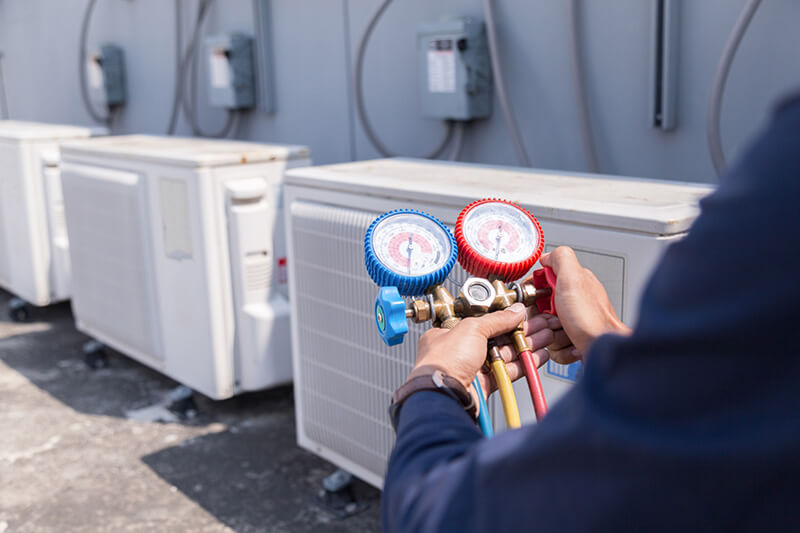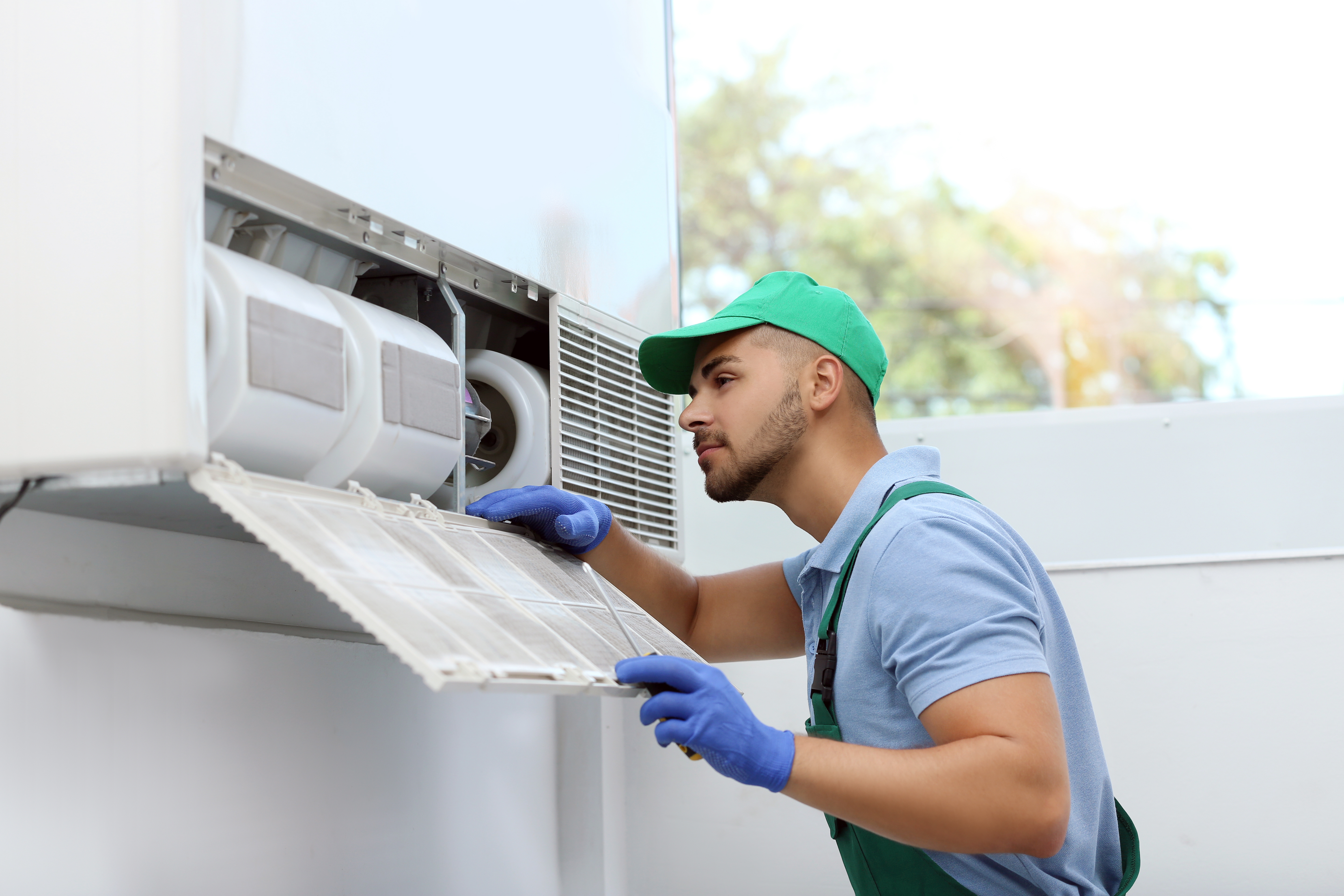Is a furnace replacement Worth It?
Is a furnace replacement Worth It?
Blog Article
How a Heatpump and Heating System Interact to Maximize Your Home's Home heating Performance
Comprehending how a heat pump and furnace job together is essential for home owners looking for reliable home heating services. Each system has its toughness, providing a balanced approach to home comfort. The warm pump excels in moderate temperature levels, while the heating system delivers fast heat throughout severe cold. This synergy not just reduces energy prices however likewise improves the life expectancy of both home appliances. What factors affect this collaboration, and exactly how can property owners optimize their advantages?
Understanding Warm Pumps: How They Work
Numerous individuals may be unknown with their inner operations, warmth pumps play a crucial role in contemporary home heating systems. These tools run by moving warm from one area to another, using the principles of thermodynamics. In chillier months, a warm pump essences heat from the outdoors air, ground, or water, and transfers it inside to warm up the home. Conversely, throughout warmer months, it can turn around the procedure, functioning as an air conditioning unit by getting rid of warm from inside to the outside.Heat pumps are composed of an evaporator, condenser, growth, and compressor shutoff. The cooling agent within the system soaks up warmth as it evaporates at reduced temperature levels and pressures. The compressor then boosts the pressure and temperature level of the cooling agent, permitting it to release heat as it condenses. This effective process can greatly minimize power intake compared to traditional home heating techniques, making heatpump a lasting option for climate control in homes.
The Role of Heaters in Home Heating
Heating systems play a vital function in home heating by giving a dependable source of heat throughout the colder months. They operate by creating heat with combustion or electrical resistance, distributing it throughout the home by means of ducts or radiant systems. The effectiveness of a heating system is often measured by its Yearly Fuel Application Effectiveness (AFUE) score, which suggests exactly how efficiently the unit transforms fuel into heat.Furnaces can use different energy resources, including natural gas, oil, lp, or power, enabling property owners to choose the most suitable choice for their requirements. Unlike heat pumps, which might have a hard time in extreme cool, heating systems maintain regular efficiency, ensuring that indoor temperature levels remain comfortable despite outdoor conditions. Additionally, contemporary furnaces commonly come furnished with advanced innovation, such as variable-speed blowers and wise thermostats, boosting their efficiency and responsiveness. This convenience makes heating systems a critical part in all-encompassing home heating strategies.

Benefits of Utilizing Both Solutions With Each Other
Incorporating the strengths of both heaters and heatpump can result in a much more effective and reliable home heating option. Utilizing both systems allows house owners to make the most of the heatpump's power efficiency during milder temperatures while counting on the heating system for more severe cold problems. This double strategy can greatly lower energy costs, as heat pumps take in less electricity than traditional heating methods when temperatures are moderate.Additionally, utilizing both systems together can improve comfort degrees in the home. Heatpump can provide constant, also home heating, while heating systems can rapidly increase ambient temperature levels when required. The assimilation of both systems can prolong the life expectancy of tools by reducing wear and tear on each system, as they share the work. Eventually, home owners can take pleasure in a well balanced, cost-effective home heating solution that adjusts seamlessly to varying climate condition, guaranteeing a cozy and inviting home throughout the winter season.
How Warm Pumps and Furnaces Complement Each Various Other
They create a corresponding home heating system that optimizes performance and comfort when home owners incorporate warm pumps and heaters. Warmth pumps run by moving warmth from the outside air or ground, making them very reliable in moderate environments. They succeed during milder temperatures, offering cost-effective home heating. Conversely, heaters produce heat via combustion or electric resistance, delivering solid, prompt heat during severe cool conditions.The combination of these 2 systems permits dynamic changes based on temperature level variations. Throughout warmer months or milder wintertime days, the warmth pump can take the lead, preserving energy and reducing costs. As temperature levels decrease, the heating system can seamlessly involve, making certain regular heat throughout the home. This synergy not just enhances energy usage yet additionally enhances the life expectancy of both systems, as each device runs within its suitable performance variety. Together, they develop a balanced atmosphere that adapts to differing environment needs.
Optimizing Performance: Tips for Homeowners
Homeowners can enhance their heating effectiveness via weblink a number of practical approaches. Developing a routine maintenance routine, integrating smart thermostat modern technology, and carrying out efficient insulation and sealing remedies are crucial steps. These actions not only improve convenience however also lower energy prices.
Normal Maintenance Schedule
To assure maximum home heating effectiveness, establishing a routine upkeep timetable is necessary for any home. Property owners need to prioritize regular inspections of both warmth pumps and heating systems to determine peak performance. This consists of changing air filters each to three months, as stopped up filters can greatly lower effectiveness. In addition, scheduling expert upkeep at the very least annually permits service technicians to identify and resolve prospective problems prior to they rise. Home owners must likewise clean up the heatpump's exterior device to stop debris build-up that can impede airflow. By adhering to a normal upkeep routine, homeowners not just enhance their heating unit' effectiveness however likewise expand their life expectancy, causing greater convenience and minimized energy expenses throughout the chillier months.
Smart Thermostat Integration
Incorporating a clever thermostat right into a home heating system can greatly boost power efficiency, specifically as it allows for accurate control over temperature level settings. These gadgets can learn the property owner's timetable and choices, instantly readjusting the temperature to enhance convenience while minimizing power use. As an example, they can decrease heating during times when the home is empty, decreasing unneeded usage. Several clever thermostats also offer real-time power usage data, making it possible for home owners to make educated choices concerning their heating practices. Additionally, remote gain access to through smart device applications permits individuals to readjust setups from anywhere, making sure the home is warm upon return. Generally, smart thermostat combination not only improves comfort yet considerably adds to power cost savings and performance.
Insulation and Securing Solutions
Smart thermostats play an important function in power effectiveness, but their efficiency can be significantly enhanced by appropriate insulation and securing solutions. Homeowners should focus on shielding attics, walls, and floorings to lessen warm loss. Premium insulation materials, such as spray foam or fiberglass, can substantially boost thermal resistance. In addition, securing gaps around ducts, doors, and home windows stops cool air infiltration and warm getaway. Weatherstripping and caulking are reliable methods for attending to these leakages - ductless mini splits. Routine assessments for air leakages, in addition to using blower door examinations, can aid identify issue locations. By investing in insulation and securing, homeowners can optimize the performance of their heating unit, inevitably bring about minimized power intake and lower energy costs
Common Myths Regarding Warmth Pumps and Furnaces
What false impressions border heatpump and heaters? Many individuals mistakenly believe that heatpump are inadequate in colder climates. In reality, contemporary heatpump are developed to operate successfully also in low temperature levels, offering reliable heating throughout winter season. One more typical myth is that furnaces are constantly a lot more efficient than heatpump. Nevertheless, this depends upon the particular energy resources and effectiveness ratings of the devices in concern. Some may also believe that using both systems all at once is unnecessary, but actually, this combination can optimize home heating effectiveness, especially during extreme weather. Additionally, people commonly assume that warmth pumps require consistent upkeep, when truthfully, they have comparable upkeep requires to traditional heating systems. By debunking these misconceptions, home owners can make more enlightened choices concerning their heating alternatives, ultimately leading to enhanced comfort and energy efficiency in their homes.
Maintenance Considerations for Combined Systems

Regularly Asked Inquiries
Can Warmth Pumps Job Properly in Extremely Cold Climates?
Heatpump can battle in incredibly cool environments because of reduced efficiency and heat extraction restrictions. Innovations in modern technology have led to models made for better performance in such conditions, improving their viability in harsh atmospheres.
Exactly How Long Do Warmth Pumps and Furnaces Generally Last?
Heat pumps normally last 15 to 20 years, while heaters have a life expectancy view website of 15 to three decades. Normal upkeep can extend their durability, making certain efficient procedure and minimizing the requirement for early replacements.

What Is the Ordinary Cost of Setting Up Both Systems?
The average price of installing both a heatpump and a furnace typically ranges between $5,000 to $10,000 - heat pump service. Factors affecting this cost consist of system size, setup complexity, and local labor prices
Exist Tax Obligation Rewards for Utilizing Energy-Efficient Home Heating Equipments?
Numerous house owners ask about tax obligation motivations for energy-efficient heating unit. Numerous federal and state programs frequently offer credit scores or refunds, encouraging the fostering of sustainable innovations to lower power usage and advertise ecological responsibility.
Just how Do I Select the Right Dimension Warm Pump and Heating System?
Selecting the right size heatpump and heating system includes computing the home's square video, considering insulation high quality, and evaluating local environment. Consulting an expert can ensure excellent system performance and power efficiency based upon specific needs. ductless mini splits. Recognizing exactly how a heat pump and heater work together is vital for home owners seeking efficient home heating options. In chillier months, a warmth pump essences warm from the outside air, ground, or water, and transfers it inside your home to warm up the living space. When home owners integrate heat pumps and furnaces, they develop a complementary home heating system that makes the most of performance and comfort. Heat pumps operate by transferring heat from the outside air or ground, making them highly efficient in modest climates. Warm pumps can struggle in extremely chilly environments due to minimized efficiency and warm removal restrictions
Report this page